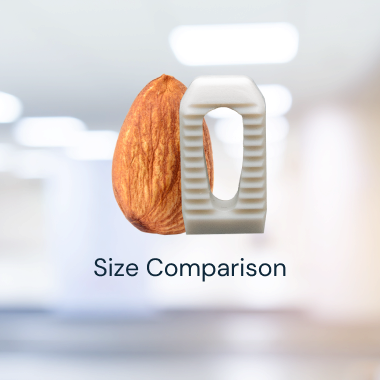October: National Physical Therapy Month
October is National Physical Therapy Month, a month dedicated to raising awareness of the benefits of physical therapy. While physical therapy is a relatively safe and effective option for many pain conditions, it’s not always the best solution for those with chronic sacroiliac (SI) joint pain.

With National Physical Therapy Month in full swing, it’s important to understand what physical therapy entails and how it may or may not be a beneficial treatment for those with SI joint pain.
What is Physical Therapy?
Physical therapy can include several different techniques that aim to improve mobility and decrease pain. In general, a physical therapist will work with an individual to perform exercises designed to strengthen or restore flexibility in specific muscle groups.
People work with physical therapists for a variety of reasons. This can involve anything from post-surgical recovery to managing chronic pain or making lifestyle changes that set the stage for lifelong health benefits. The main benefit of physical therapy is that it enhances movement and enables people to feel better while participating in the activities they love.
Other benefits of physical therapy include:
- Restore function
- Avoid or be better prepared for surgery
- Improve balance and coordination
- Prevent or recover from a sports-related injury
- Eliminate or reduce pain
- And so much more.
Physical Therapy for SI Joint Dysfunction
Physical therapists are specially trained to rehabilitate an individual’s condition, which means they will likely have knowledge of how sitting, standing, walking and other daily activities can affect an individual’s mobility. Therapists use this information to help individuals learn how to perform daily tasks more safely and with greater ease.
For patients suffering from SI joint dysfunction, physical therapy is often a conservative treatment option that may help ease the pain and discomfort. A physical therapist may tailor a program for individuals with SI joint dysfunction that may include strengthening exercises, range-of-motion or stretching exercises, and massage therapy. These various techniques help stabilize the joint, improve mobility in the joint, hip, and lower back, and reduce the stress load.
What if Physical Therapy Doesn’t Work?
Have you tried physical therapy and still have SI joint pain? While conservative care may help those with temporary SI joint pain, it may do little to stabilize a dysfunctional SI joint. If your SI joint pain continues after conservative care, like physical therapy, talk with your physician about LinQ. The LinQ SI Joint Stabilization System provides SI joint dysfunction patients with a minimally invasive option to combat pain.
Contact us today to learn more.


